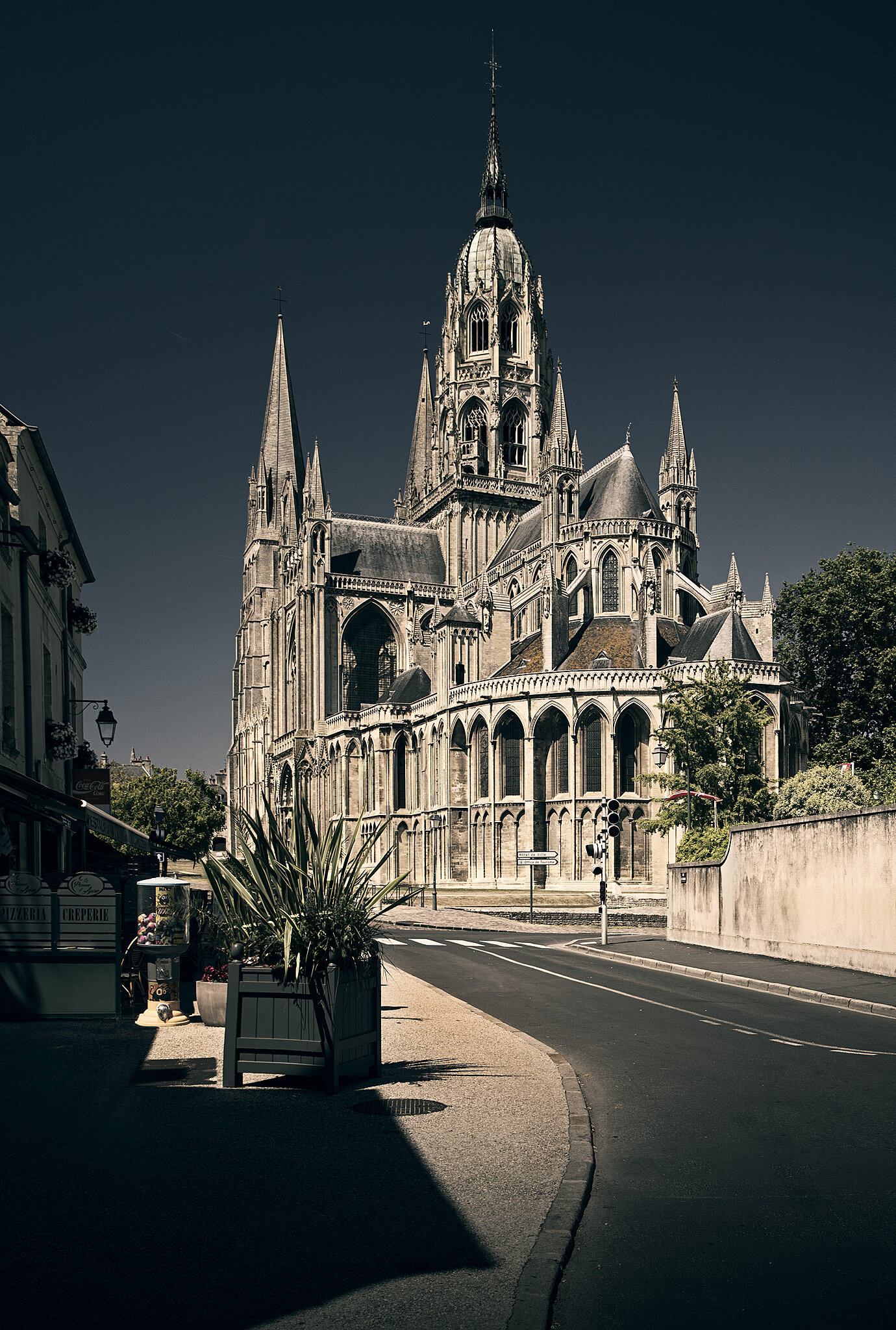Bayeux Cathedral, Normandy, France


Bayeux was a Bishop's seat since antiquity, and, under the Dukes of Normandy, it played the role of the second capital city, until William the Conqueror transferred this function to Caen. It was at Bayeux that William the Conqueror held court, and where Harold, Earl of Wessex, is said to have sworn an oath to him.
Bishop Odon de Conteville lived from 1049-1097. He was born to the same mother as William the Conqueror. The Bishop was rewarded for his participation and support of his brother in his Conquest of England, by being given the county of Kent. This helped the Bishop to supply some of the funds needed to create his expensive new Cathedral at Bayeux.
The Romanesque Cathedral was built to replace a previous church, which was located on the vestiges of a forum dating back to the Roman period. The new Cathedral was consecrated in 1077 by Bishop Odo, in the presence of his half brother William the Conqueror, and his brother’s wife, Matilda of Flanders. William was by then King of England, as well as Duke of Normandy. The crypt and the capitals in the transept, are the only surviving features from Odo’s Cathedral.
In 1160 the Cathedral was largely damaged by fire, and although this was repaired rather than rebuilt, the vaulting and decorations were repaired in the new Gothic style, rather than the original Romanesque.
There has been a widespread belief that the Bayeux Tapestry was ordered to be created by Bishop Odo, to hang in his new cathedral at Bayeux, however this theory does not hold up to scrutiny. The theory comes from the fact that in the 15th Century, the Bayeux Tapestry was located at Bayeux Cathedral, and it was the practice then to bring the tapestry out once a year to hang on the walls of the nave. We do know that in 1476, the tapestry was kept in the cathedral treasury, it was described as:
‘A very long and narrow hanging of linen, embroidered with figures and inscriptions representing the conquest of England, which is hung around the nave of the church on the Feast of Relics and throughout the Octave’ (from 1st-8th of July)
The original purpose of the Bayeux Tapestry has yet to be determined. The Tapestry is secular in nature, it's religious overtones are few and far between. It is more likely to have been created to decorate a great hall, rather than a Cathedral. If it were intended for Bayeux Cathedral, then surely Bishop Odo would have played a more prominent role, and been shown in his episcopal robes, and Bayeux Cathedral itself would have been represented. Bayeux is shown on the tapestry, but it’s represented by it's castle and not it's Cathedral. The great new church that is shown in the tapestry, is instead, Westminster Abbey. All of which makes the origin of the tapestry more of a mystery.




